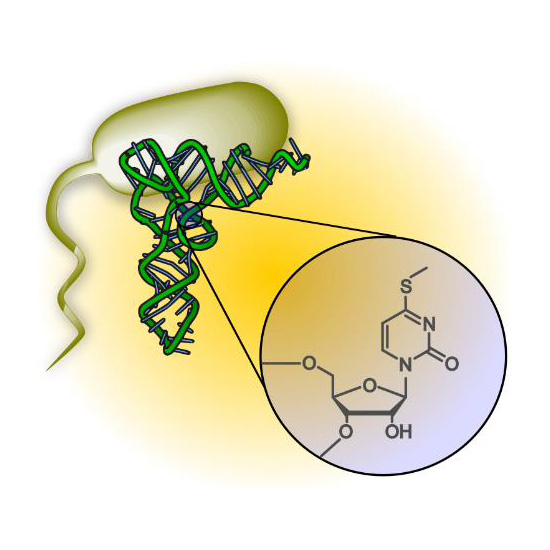Synthesis and metabolic fate of 4-methylthiouridine in bacterial tRNA
2020-05-12
Christoph Borek, Valentin F. Reichle and Stefanie Kellner
ChemBioChem, 2020, 21, 1–5
Ribonucleic acid (RNA) is central to many life processes and, to fulfill its function, it has a substantial chemical variety in its building blocks. Enzymatic thiolation of uridine introduces 4‐thiouridine (s4U) into many bacterial transfer RNAs (tRNAs), which is used as a sensor for UV radiation. A similar modified nucleoside, 2‐thiocytidine, was recently found to be sulfur‐methylated especially in bacteria exposed to antibiotics and simple methylating reagents. Herein, we report the synthesis of 4‐methylthiouridine (ms4U) and confirm its presence and additional formation under stress in Escherichia coli . We used the synthetic ms4U for isotope dilution mass spectrometry and compared its abundance to other reported tRNA damage products. In addition, we applied sophisticated stable‐isotope pulse chase studies (NAIL‐MS) and showed its AlkB‐independent removal in vivo . Our findings reveal the complex nature of bacterial RNA damage repair.








